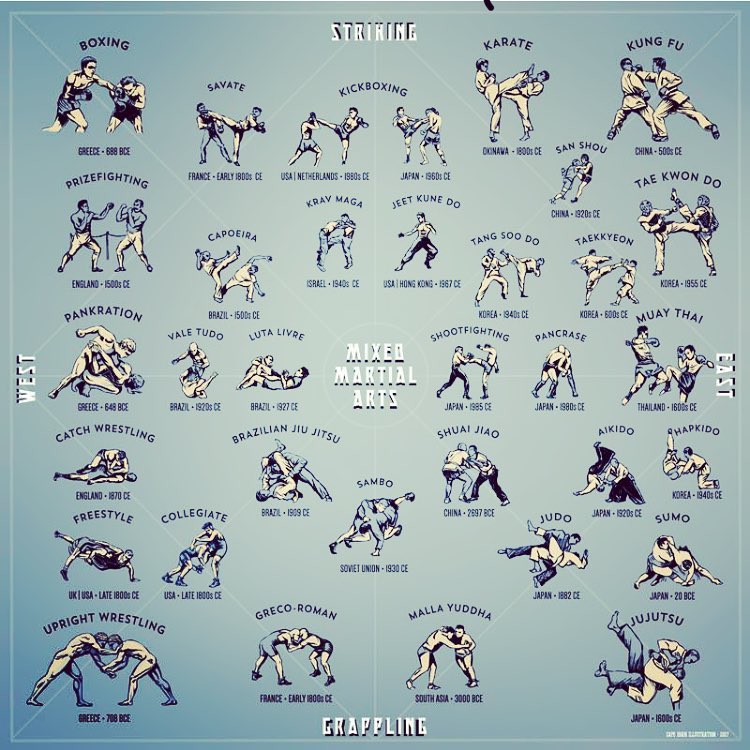Introducing The Selection Of Martial Arts Disciplines: An Overview From Martial Arts To Taekwondo
Introducing The Selection Of Martial Arts Disciplines: An Overview From Martial Arts To Taekwondo
Blog Article
Authored By-Haugaard Francis
Are you tired of sensation overwhelmed by the substantial world of martial arts? With so many designs to choose from, it can be very easy to obtain shed in a sea of punches, kicks, and mystical names. But worry not!
why martial arts is important in criminology will demystify the different fighting styles styles, taking you on a trip from the powerful strikes of Karate to the dynamic kicks of Taekwondo. Prepare yourself to discover the origins, methods, and approaches behind these old art types.
So, tighten your belt and prepare to start an informing exploration right into the exciting world of martial arts.
Origins of Martial Arts Styles
The beginnings of fighting styles styles can be traced back to ancient worlds and their need for protection and combat techniques. Throughout background, various cultures established their own unique approaches of combating, each with its very own set of strategies and ideologies.
In China, as an example, martial arts designs such as Martial art and Tai Chi were created as a way of protection and improving physical and psychological health.
In Japan, the samurai warriors developed styles like Karate and Judo, concentrating on technique, accuracy, and proficiency of the body.
Similarly, in Korea, Taekwondo emerged as a martial art stressing high kicks, rapid motions, and psychological perseverance.
These very early human beings laid the structure for the diverse range of martial arts designs that exist today, each with its very own rich background and cultural value.
Techniques and Training Methods
To master martial arts styles, specialists should discover various methods and training methods.
Techniques are the particular activities and actions used in fight, such as strikes, kicks, tosses, and obstructs. Various fighting styles designs have their very own unique set of techniques that experts have to understand via rigorous training.
https://www.dailymail.co.uk/news/article-11875795/Children-young-six-make-sick-taekwondo-tournaments-avoid-20-weight-fines.html vary depending upon the style, yet they typically include a mix of physical conditioning, drills, competing, and kinds.
Physical fitness is critical to build strength, adaptability, and endurance. Drills assist professionals improve their strategies and enhance their speed and accuracy.
Competing permits professionals to exercise their techniques in a regulated, realistic atmosphere. Kinds, additionally referred to as kata, are deliberate series of movements that help specialists create muscle memory and emphasis.
Ideologies and Principles
Discovering the approaches and principles of fighting styles designs can offer you with a deeper understanding of your chosen discipline. Each martial art has its very own special viewpoint and collection of guiding concepts that form the method it's practiced.
For instance, Martial arts emphasizes technique, respect, and self-constraint. It instructs experts to concentrate their minds and bodies, allowing them to defend themselves while maintaining a sense of internal tranquility.
On the other hand, Taekwondo puts a solid emphasis on speed, dexterity, and flexibility. Its concepts are rooted in the tenets of politeness, stability, perseverance, self-discipline, and indomitable spirit.
Conclusion
Since you have actually checked out the beginnings, techniques, and approaches of numerous fighting styles styles, you have a much deeper understanding of these old techniques.
Picture a young karate pupil, experimenting unwavering resolution and focus, appearing boards with an effective punch.
Their trip showcases the devotion and stamina called for to understand a martial art, advising us that with discipline and willpower, anything is feasible.
